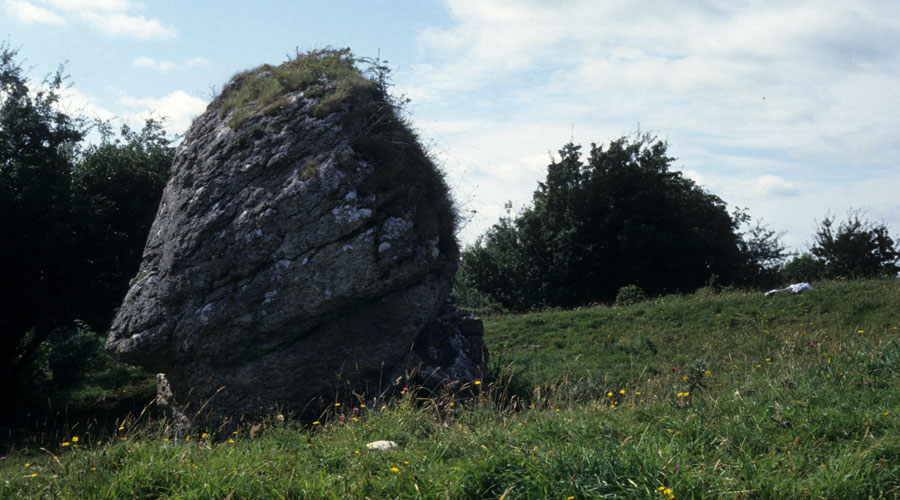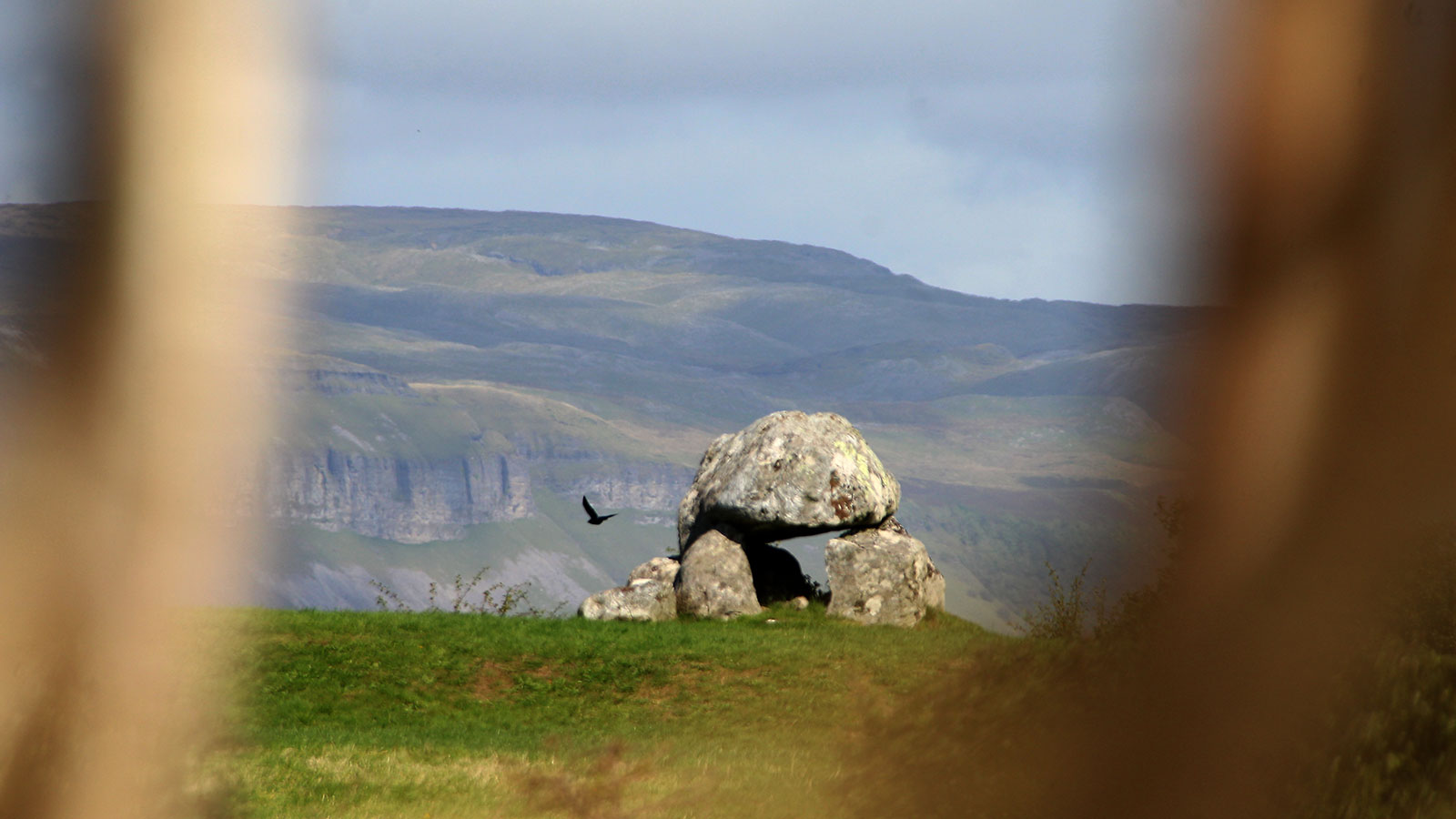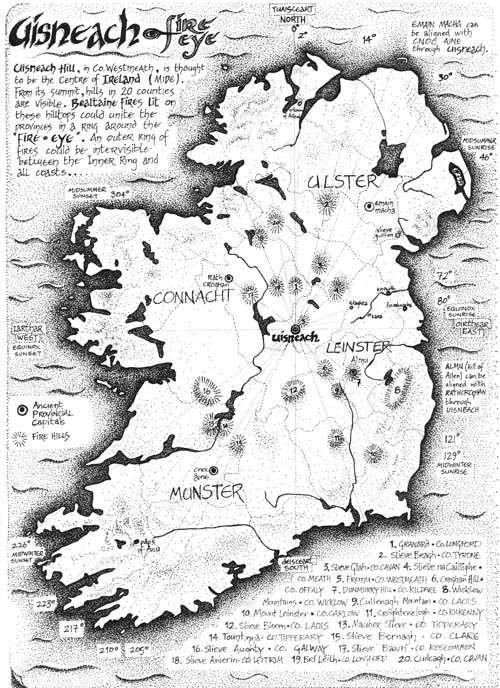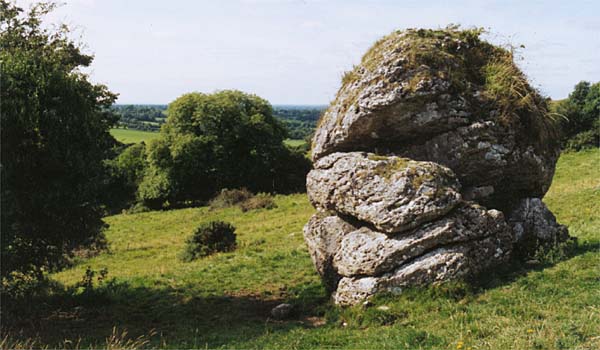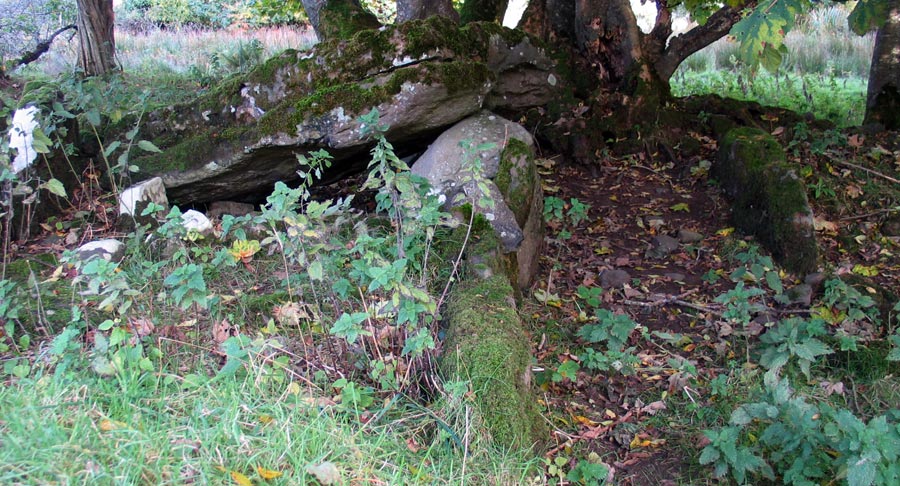The Hill of Uisneach, the Centre of Ireland.
The Hill of Uisneach is the ancient centre of Ireland, located between Mullingar and Athlone in County West Meath. It has important links with the capital at Tara and the Beltaine bonfire ceremonies. There are at least twenty ancient monuments around the hill, the oldest of which may be a passage grave on the highest point, destroyed by sappers during the Ordinance Survey in the 1830's.
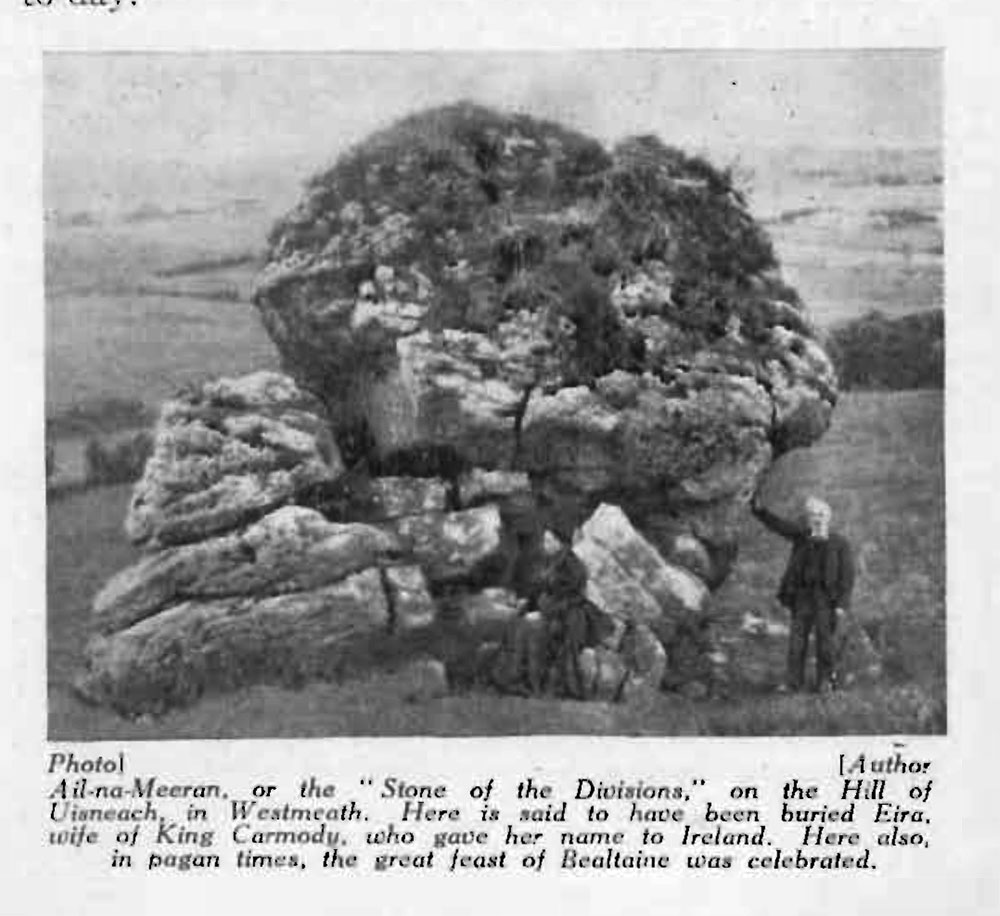
There is a large stone set up on the side of the Hill of Uisneach, which is known, according to tradition as The Stone of Divisions, Aill na Mireann in Irish. The more common name for this large craggy lump of limestone is The Catstone, as some have seen a squatting cat in its form. The Catstone is said to be placed exactly at the centre of Ireland, and the division and boundry lines of the four provinces are said to meet here at the stone.
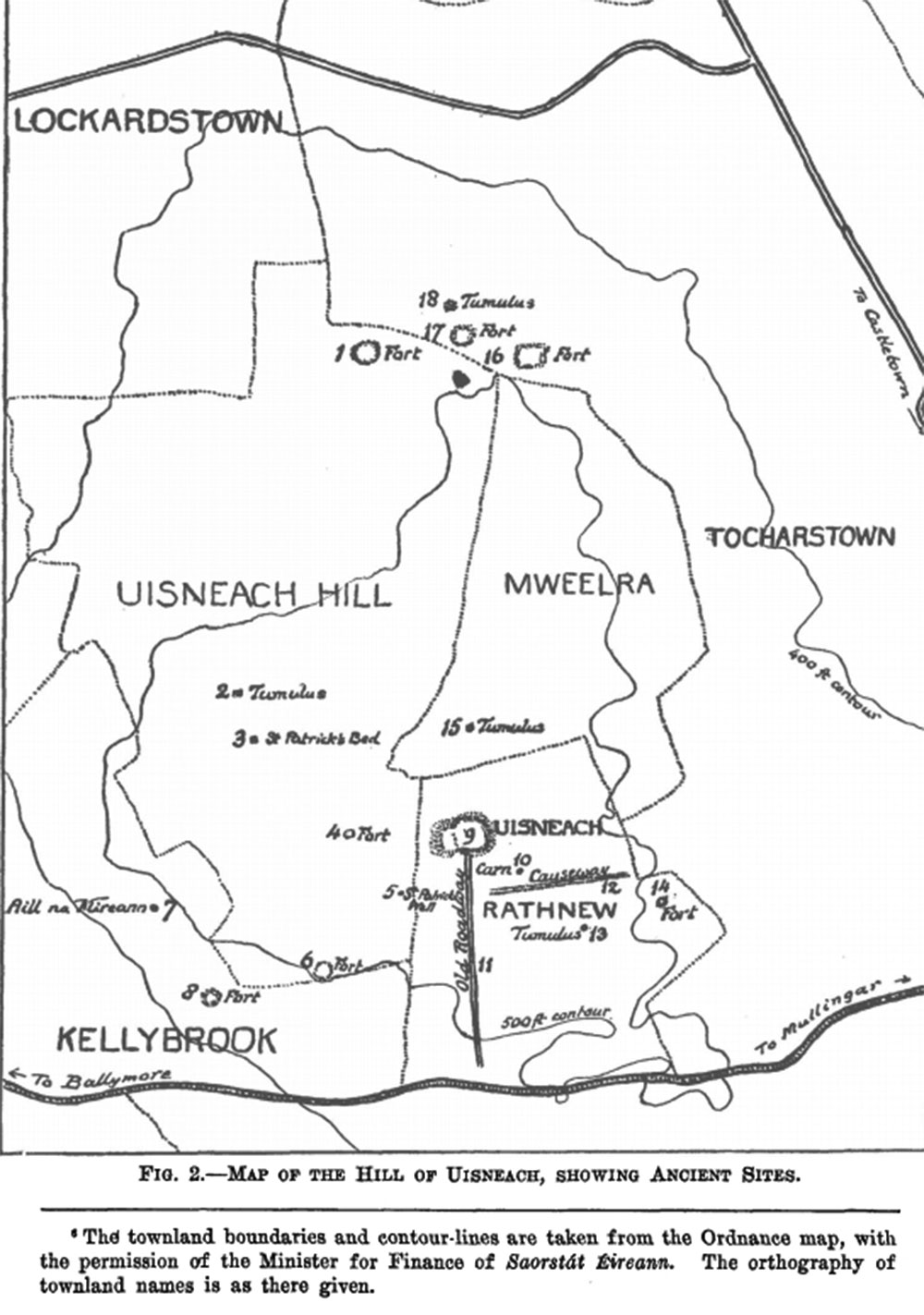
John O'Donovan, visiting the Uisneach in 1837 during heavy rain, commented on the Catstone, saying that it:
is well worthy of the attention of antiquarians. It is at least twenty feet high and sixty feet in circumference at the base. It is unquestionably a natural rock, for no human power, either now or in the time of the giants, could have moved it; but art has been used in remodelling it. Four large blocks have been seperated from its south-west face, and erected into a splendid cromlech. Some might suppose that these pieces naturally fell from the side of this rock and placed themselves by chance in this position of a cromlech, but to my mind their position presents all the appearance of design. One can plainly see the places in the side of the rock from which the blocks fell by the operations of nature or were taken by human art, and can see how they might be replaced again as might pieces cut out of a round cheese or an apple; but it would puzzle one to account for the manner in which such massy pieces were detached in such apparently intended shapes.

